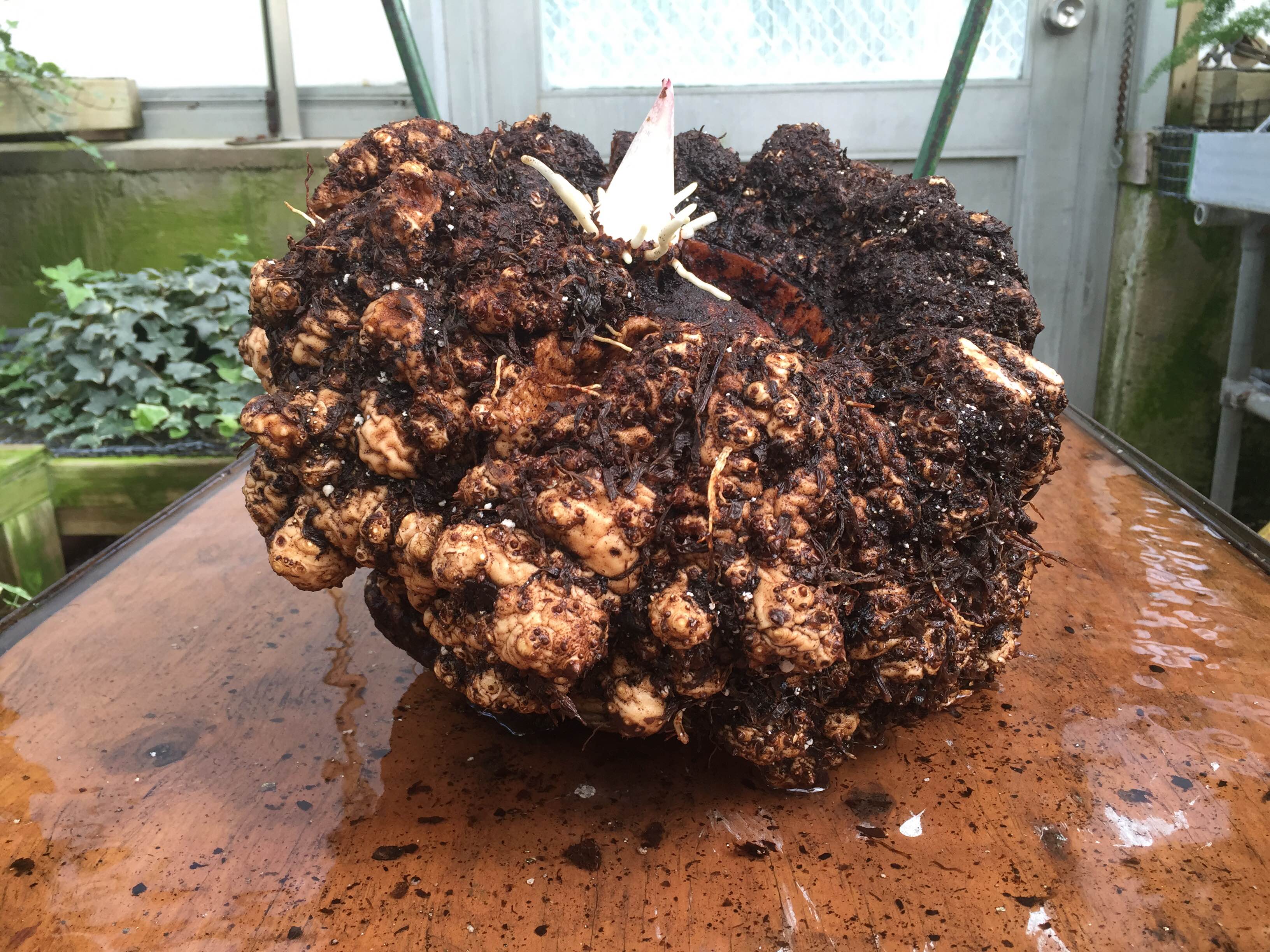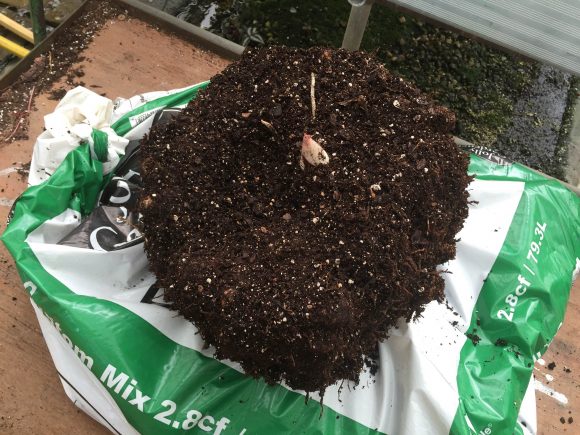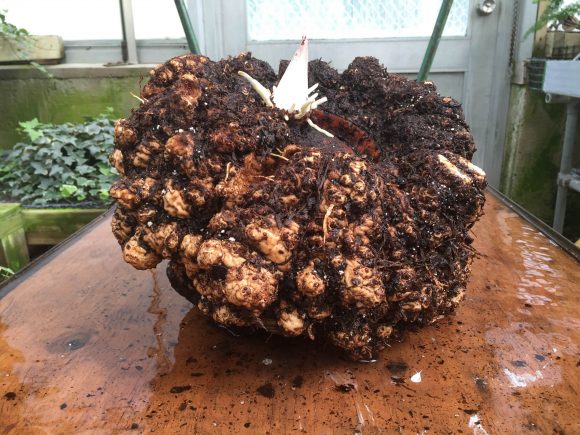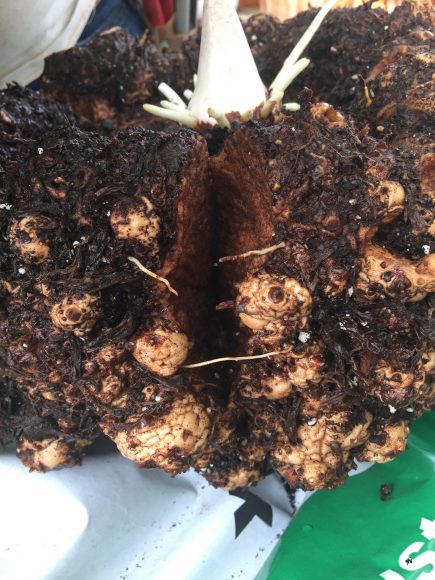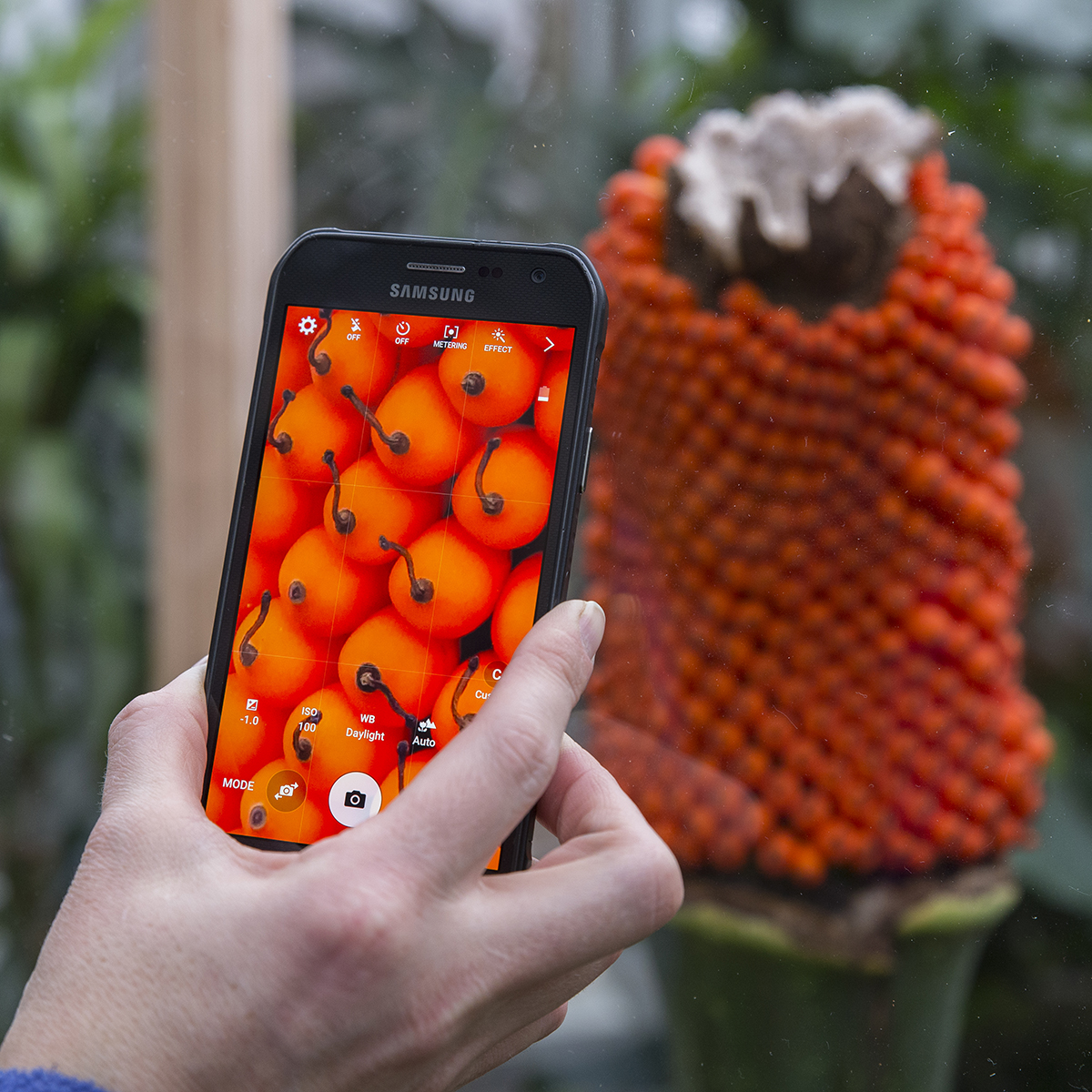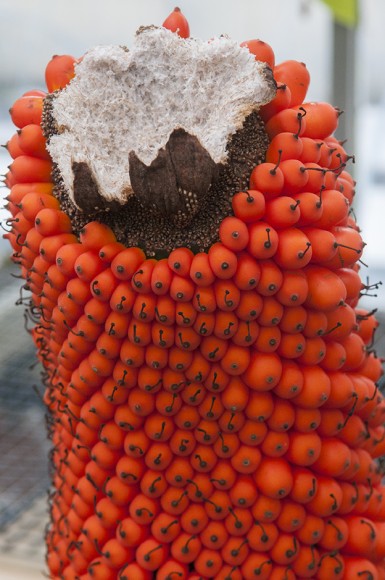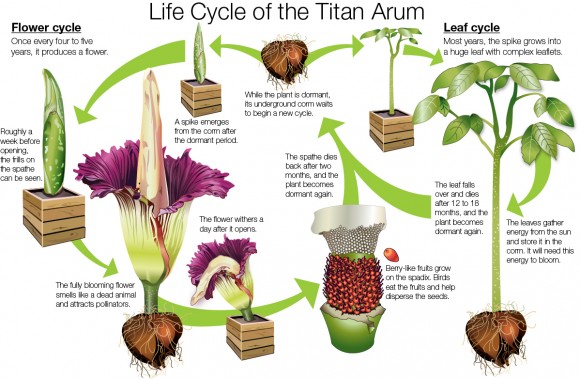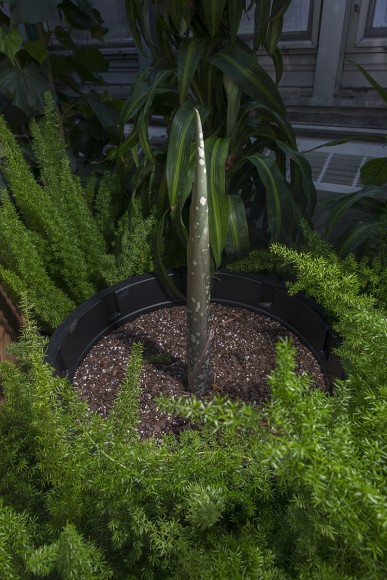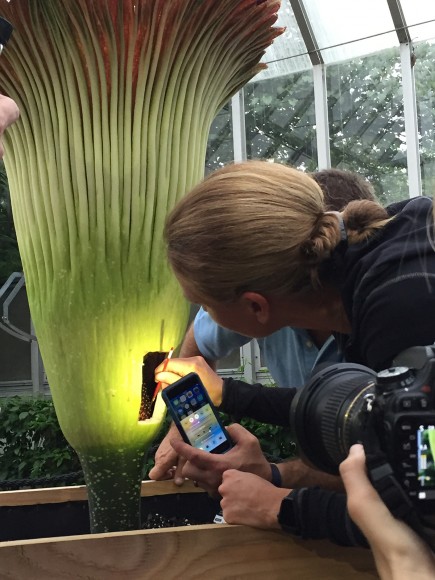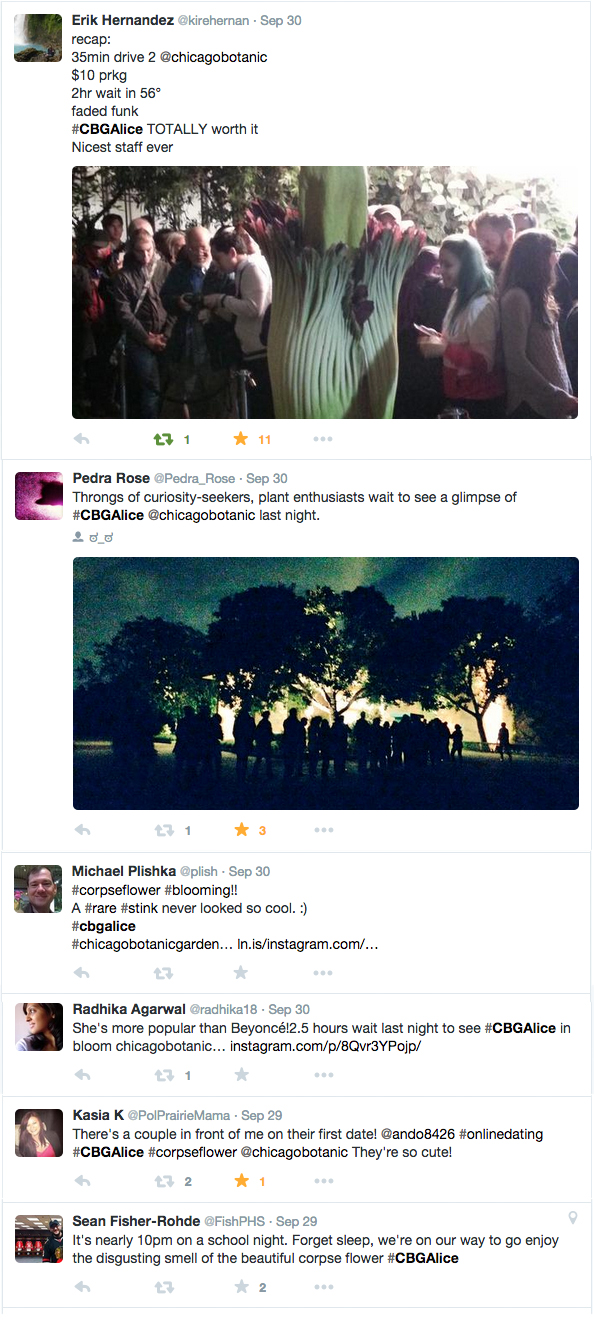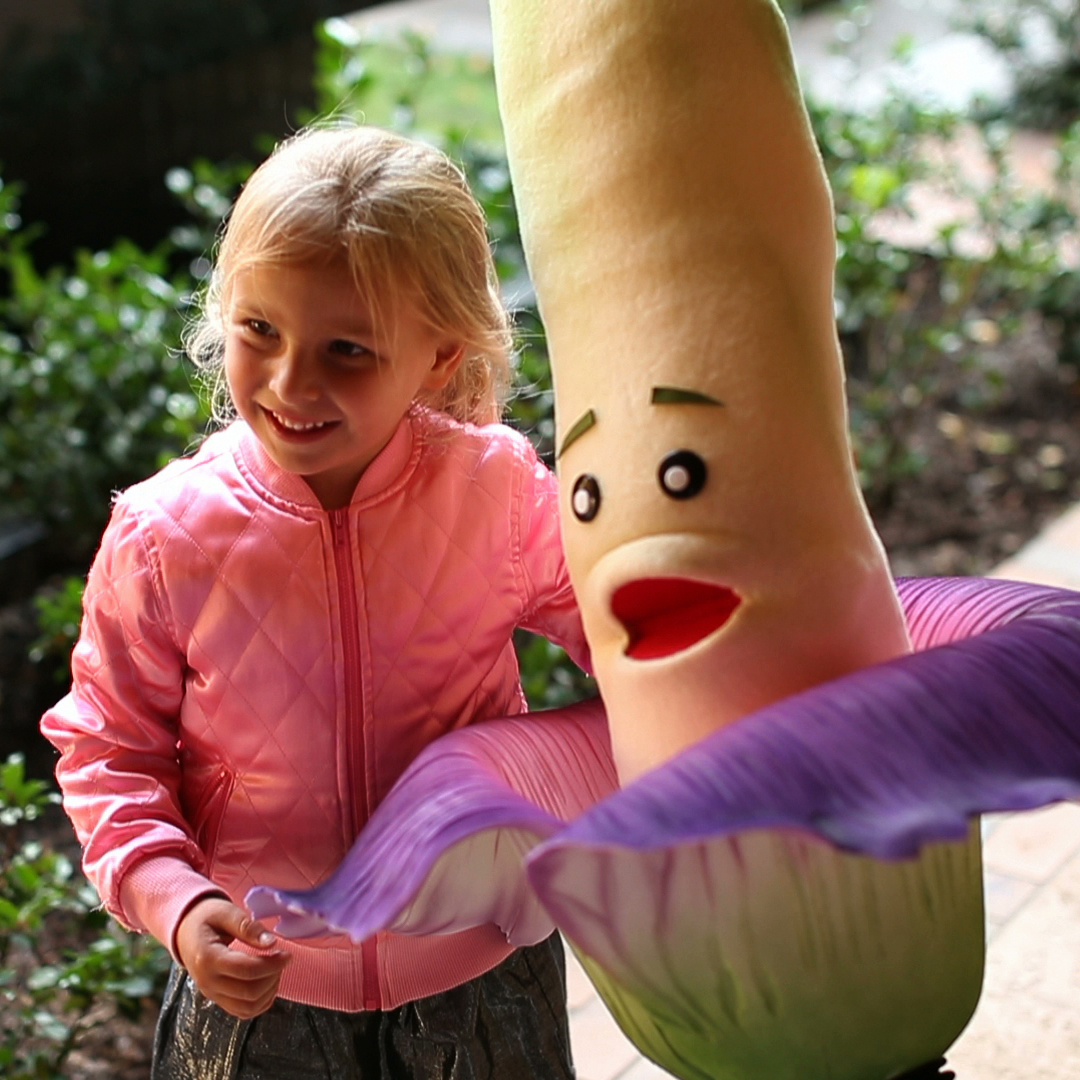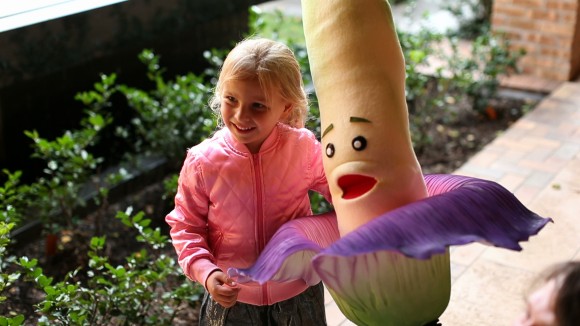I have an update on Alice the Amorphophallus: Alice has been repotted and has a leaf sprout. Yes, Alice is alive and well, happily growing in the production greenhouses here at the Chicago Botanic Garden.
(Many of you might remember we successfully pollinated Alice with pollen from Stinky, donated to us from the Denver Botanic Gardens’ own Amorphophallus titanum.)
Alice followed a normal growth cycle—as it would have in its native habitat on the island of Sumatra, Indonesia—producing fruit and seeds. This past summer, the flower stalk with the remaining fruit began to wither and collapse as Alice went into dormancy. (We successfully sowed and germinated the seeds, and were rewarded with several dozen seedlings.) On Tuesday, September 13, we removed Alice from the wooden crate she had been living in for the past 24 months, pleased to observe a healthy corm—and a new leaf shoot emerging from the top! We loosened the corm below the soil surface in order to repot it and record its current measurements, and got a few pretty interesting photos.
First, we washed the corm thoroughly so we could examine it better and get accurate measurements of the corm’s weight and size. We looked for areas of rot, if any, and pulled off any new bulblets that may have developed. (We removed and potted up two new small bulblets—mini-corms—from Alice at this repotting.)
One big observation was that the corm had actually decreased in size and weight. The big cracks seen in the images below are from the corm rapidly shrinking in size. This is from the large amount of energy (starch and sugars) used for Alice to bloom, and in the production of fruit and seeds. Rather than losing mass and becoming spongy, the post-bloom and fruiting corm is the same density, but smaller in size—both diameter and height—by several inches.
Now Alice is getting ready to begin the life cycle all over again as a leaf. A ring of new roots at the top of the corm is to support the growth of the emerging leaf bud. The roots do not form or add to a new corm—new corms come from the main corm as bulblets on the side and bottom of the original corm.
The corm has been repotted in a mixture of peat, coir (coconut fiber), composted bark, and perlite, back in its original crate, which still has room to grow in it.
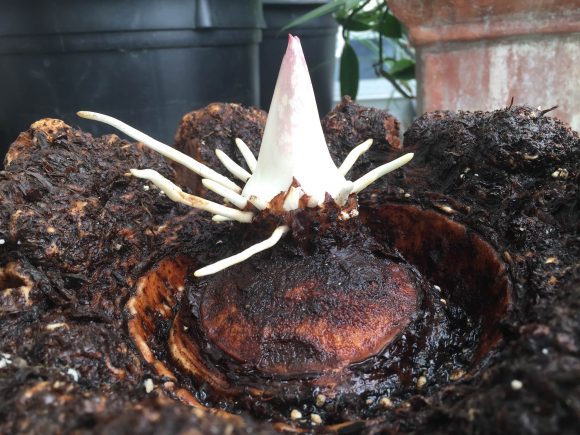
Here are some interesting details on the corm:
- Corm size: 13 inches in diameter and 7.5 inches in height
- Corm weight: 17.5 pounds (weight at last repotting in 2014 was 28.2 pounds)
- Base of old stem (top growth plate): 4.75 inches in diameter
- Bottom growth plate: 3.5 inches in diameter
- New growth/leaf shoot: 2 inches tall (still underground) with a healthy rosette of new roots
- Surface of the corm: very lumpy and warty looking
I can’t believe it has been a year since we all gathered in the Semitropical Greenhouse at the Chicago Botanic Garden to celebrate Alice’s bloom and stink. What an event that was! Alice will bloom another day, maybe three to five years from now; we will just have to wait and see. But in the meantime, it’s likely another one of the titan arums in our collection will bloom before then.
©2016 Chicago Botanic Garden and my.chicagobotanic.org

